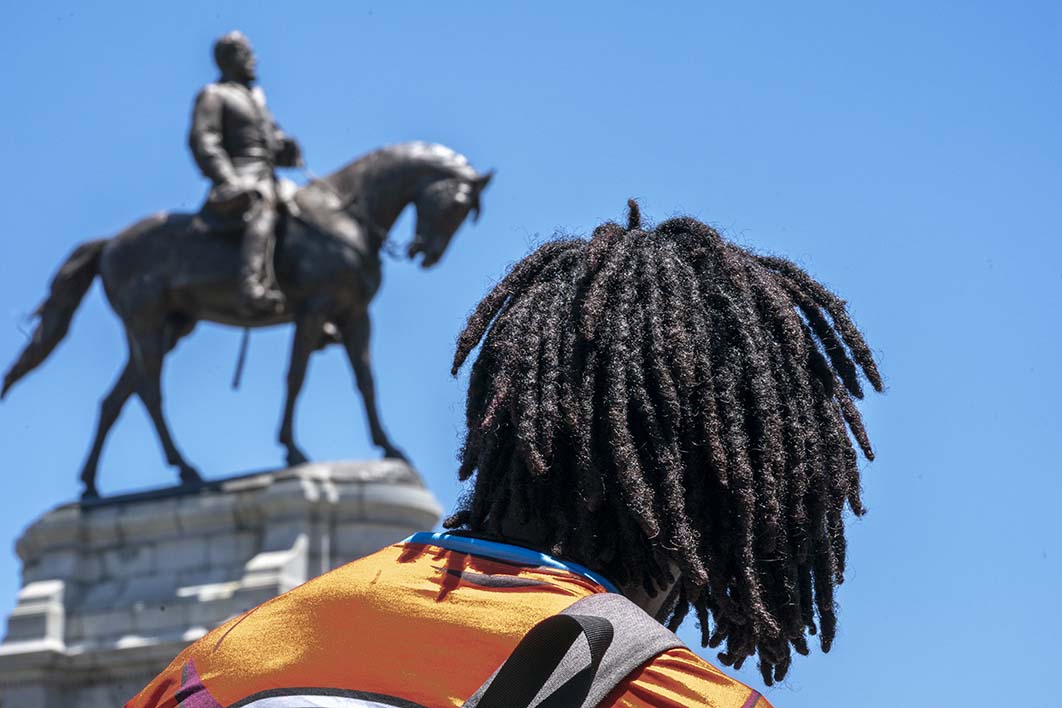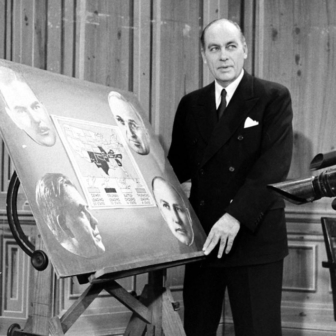The teachers in the schools I attended in Minnesota back in the fifties left us in no doubt about the justice of the Union cause in America’s civil war. But they also encouraged us to admire one of the leading members of the Confederacy: General Robert E. Lee. Lee, we were told, was not only a good general but also a decent man who did not support slavery or secession. He only fought for the southern side, they told us, because he was loyal to the people of his state of Virginia.
The belief that Lee was a “good Confederate” was widely shared. Streets in northern as well as southern cities were named after him. When the Robert E. Lee monument was unveiled in New Orleans in 1884, veterans from the Union as well as the Confederate army honoured a man renowned through all America as a model of leadership. On the hundredth anniversary of his birth, president Theodore Roosevelt praised him as a great leader and a contributor to American national life. Future president Franklin Roosevelt attended the unveiling ceremony of a monument to Lee in Dallas in 1932, and president Dwight Eisenhower included his picture among the four “great Americans” hanging in his office
Now, though, the statue of Lee in New Orleans has been taken down and put into storage. The monument to Lee in Dallas was removed and put up for auction in 2019. A street in New York City named after Lee has been renamed, and two elementary schools in California that bore his name have undergone a rechristening. A huge statue of Lee on horseback in Richmond, Virginia, now covered in graffiti, will soon be taken down.
“That statue has been there for a long time. It was wrong then, and it’s wrong now. So we’re taking it down,” said the Virginia governor, Ralph Northam. His decision was prompted by large rallies in Richmond protesting against the killing of George Floyd in Minneapolis. Protesters projected a picture of Floyd’s face onto Lee’s monument.
Whatever happened to make Lee, once so widely regarded as a model of decency and nobility, fall from grace?
One reason for the fall is that those who once thought it was safe to honour Lee because he opposed slavery have been forced to recognise that this is simply not true. Lee was a slave owner who did not hesitate to commit one of the worst forms of cruelty: breaking up slave families. His doubts about slavery had nothing to do with a belief that slaves should be freed: he worried, rather, about the impact of this “necessary” system on white Americans.
Like many white southerners, Lee believed that black people were naturally inferior to whites and were better off in slavery. He regarded black Union soldiers captured by his army as runaway slaves, and he refused to make a deal with General Ulysses Grant of the Union side for an exchange of prisoners because Grant insisted that black and white soldiers be treated equally.
Lee’s racist opinions never changed. After the civil war, he argued against the enfranchisement of former slaves because he thought that they were incapable of being good citizens. He supported the efforts of white southerners to keep black people in a subordinate position.
African Americans never shared the sentiments that put Lee on a pedestal. Frederick Douglass, the former fugitive slave and prominent campaigner for black rights, was nauseated by the flattery of Lee. “It would seem…” he said, “that the soldier who kills the most men in battle, even in a bad cause, is the greatest Christian, and entitled to the highest place in heaven.” The celebration of Lee ignored the history and point of view of black Americans.
Lee’s views on race, though now recognised as obnoxious, were shared by most white southerners and by many people in the north. And he did, after all, have some admirable traits. He refused to go along with Confederate leaders who wanted to continue the war using guerilla tactics because he believed this would merely impose more suffering on civilians. He advised his fellows to avoid bitterness and to overcome the wounds that the war had inflicted on the whole nation. He did not use his reputation to acquire wealth or power for himself, and he did not want to be adulated or memorialised.
The reason for Lee’s fall is not primarily his lack of humanity towards slaves and black soldiers or the fact that most Americans are now less forgiving of the racist opinions he shared with many others. It is a response to Lee’s key role in a propaganda campaign waged by white southerners to retain their ability to suppress and exploit black Americans.
Understanding this history is essential to an appreciation of why so many people, white as well as black, are now attacking memorials to Lee and demanding their removal. By seeing what Lee represents we can make the connection between a memorial in Richmond, Virginia and the killing of George Floyd by police in Minneapolis.
White southerners who promoted the myth of Lee were rewriting their attempt to secede from the United States as a fight for independence and cultural preservation. They played down the fact that the southern aim in fighting a war of secession was to preserve their system of slavery: what Douglass described as their “bad cause.” Honouring prominent members of the Confederacy as heroes worthy of general admiration was an important part of their strategy. Lee, now safely dead, was a good instrument for this purpose because he embodied often-admired manly characteristics of loyalty, courage and competence in war, magnanimity in victory and dignity in defeat.
Lee, and the message he was used to propagate, were easy to sell not only to southerners but also to white northerners who wanted to reunify the country and get on with the job of increasing American wealth and power. They were willing to forget the central aim of many of those who fought in the civil war: to liberate slaves and to enable them to enjoy all the rights of free citizens.
The period of reconstruction in the South, when Congress in Washington supported programs that enabled former slaves to make gains and exercise their rights as citizens, came to an end when the federal government refused to use force to prevent vigilante groups like the Ku Klux Klan from terrorising black people. State legislatures controlled by the people who had supported the Confederacy were able to cement their dominance over the black population by introducing laws that systematically discriminated against African Americans.
By not opposing racism in the South, American governments ensured that it would become endemic in the rest of the country. The influence of white southerners in the Democratic Party combined with racist sentiments in the north to prevent African-American families from accessing government benefits offered to white families. City governments connived with real estate agents to keep black people out of areas where white people lived, relegating black families to slums with inadequate services and poorly funded schools. Police became agents for protecting white citizens from problems caused by generations of systematic discrimination against African Americans, and disproportionate violence against black people was the inevitable consequence.
The myth of Lee promoted by white southerners and willingly adopted by other white Americans is not responsible for all the ills that followed the civil war. But it helped to distract Americans from the task of liberation that the civil war only began. It is not surprising that the statues and memorials erected to celebrate a culture that oppresses black people are now under attack from Black Lives Matter and other groups fighting against racism.
Nor is it surprising that those statues and memorials have become symbols for white nationalist groups. The decision by the city council in Charlottesville, Virginia to remove a statue of Lee and rename Lee Park, where the statue stands, as Emancipation Park sparked the Unite the Right protest that resulted in the death of a woman involved in the counter-protest. The statue remains standing because of a court injunction against the removal of war memorials that is about to be lifted.
Should the statues of Lee and other Confederate leaders be preserved as a reminder of historical events, as some people argue? Yes, says the 1960s civil rights activist Fergie Reid: “I think they should go to a museum, just like the dinosaurs.” •




